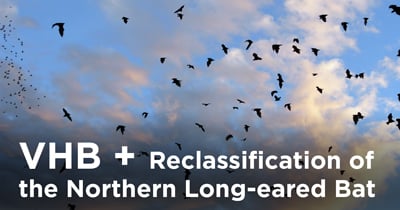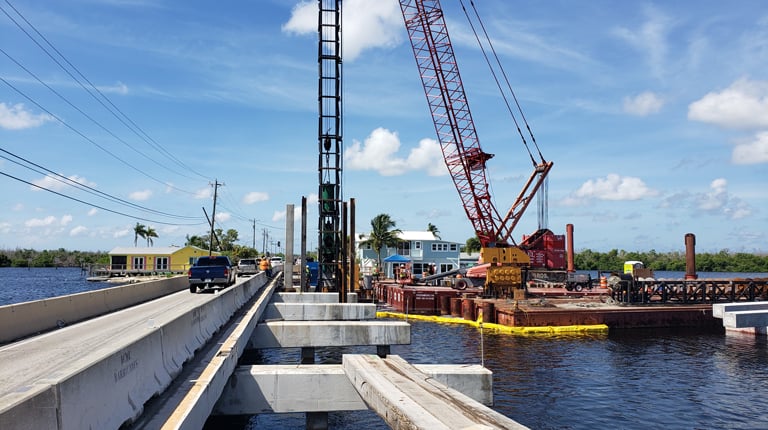
On November 30, 2022, the U.S. Fish and Wildlife Service (USFWS) published a final rule to reclassify the northern long-eared bat (Myotis septentrionalis; NLEB) from threatened to endangered under the Endangered Species Act (ESA;16 U.S.C. § 1531 et seq.). Listed as threatened in 2015, the NLEB now faces extinction largely due to an introduced fungal pathogen, white nose-syndrome, which has affected its population across most of its range. Originally slated to take effect on January 31, 2023, implementation of the rule is currently delayed until March 31, 2023.
VHB’s team of scientists and biologists have been actively monitoring the NLEB’s protection status to understand how the new rule will affect projects at all stages of development, and how we can best support our clients navigate these new regulatory changes.
What to Expect
The USFWS is preparing new tools, guidance documents, and training that should become available before the endangered rule goes into effect. The anticipated documents include a new range-wide determination key which will replace the existing 4(d) key, an updated programmatic biological opinion (PBO) to facilitate consultations for some federal transportation agencies, and an interim consultation framework for projects that are not eligible for review under the new determination key or updated PBO.
Although updates are pending, the most significant changes VHB anticipates include prescriptive winter and summer seasonal clearing restrictions, stricter USFWS consultation requirements, the development of a NLEB mitigation plan and/or habitat conservation plan for wind projects, and removal of exceptions for forestry operations. VHB’s scientist and biologists have been closely following updates and will share the new information with clients once it is available.
How VHB Can Help
VHB specializes in performing presence/probable absence (P/A) surveys targeting the NLEB and other currently protected and priority bat species that are being considered for protection under the ESA, including the tri-colored bat (Perimyotis subflavus) and the little brown bat (Myotis lucifugus). Our scientists and biologists are highly experienced in acoustic surveys, visual bridge and culvert assessments, habitat assessments, mist-netting surveys, and the facilitation of ESA Section 7 consultations for NLEB. In addition, VHB processes and manages bat call data and has experience working with clients to share data with the North American Bat Monitoring Program (NABat), a collaborative network that collects monitoring data across the continent to improve the science of where, when, and how bat populations are changing over time.
The VHB team brings the education, experience, and regulatory understanding to support our clients. For specific project questions and information regarding reclassification of the NLEB, connect with our regional bat specialists.
New England & Northeast: Chelsea Glinka, Senior Environmental Scientist
Mid-Atlantic: Anna Weaver, Environmental Scientist
Southeast: Alex Levy, Ecology Practice Leader



